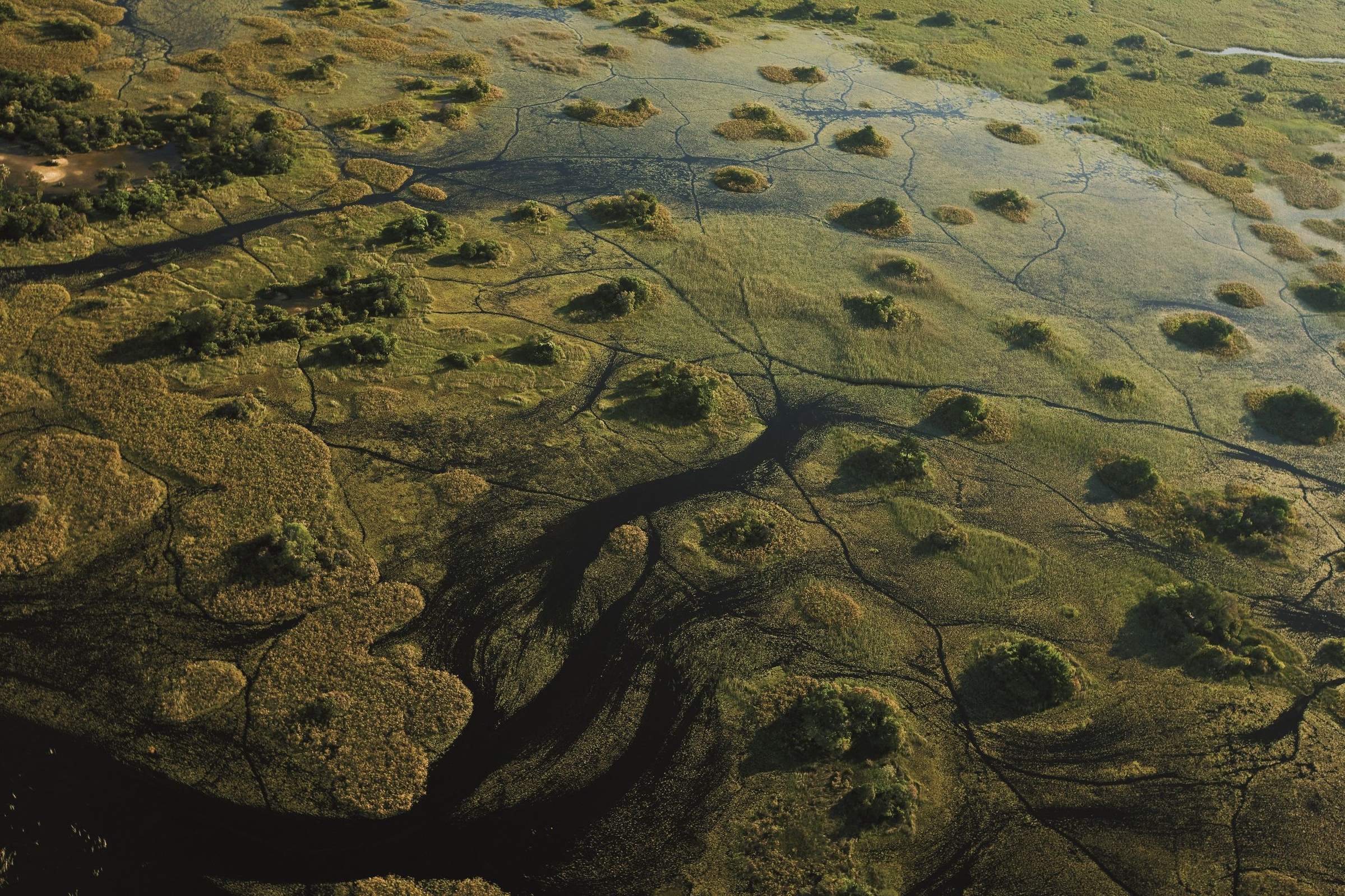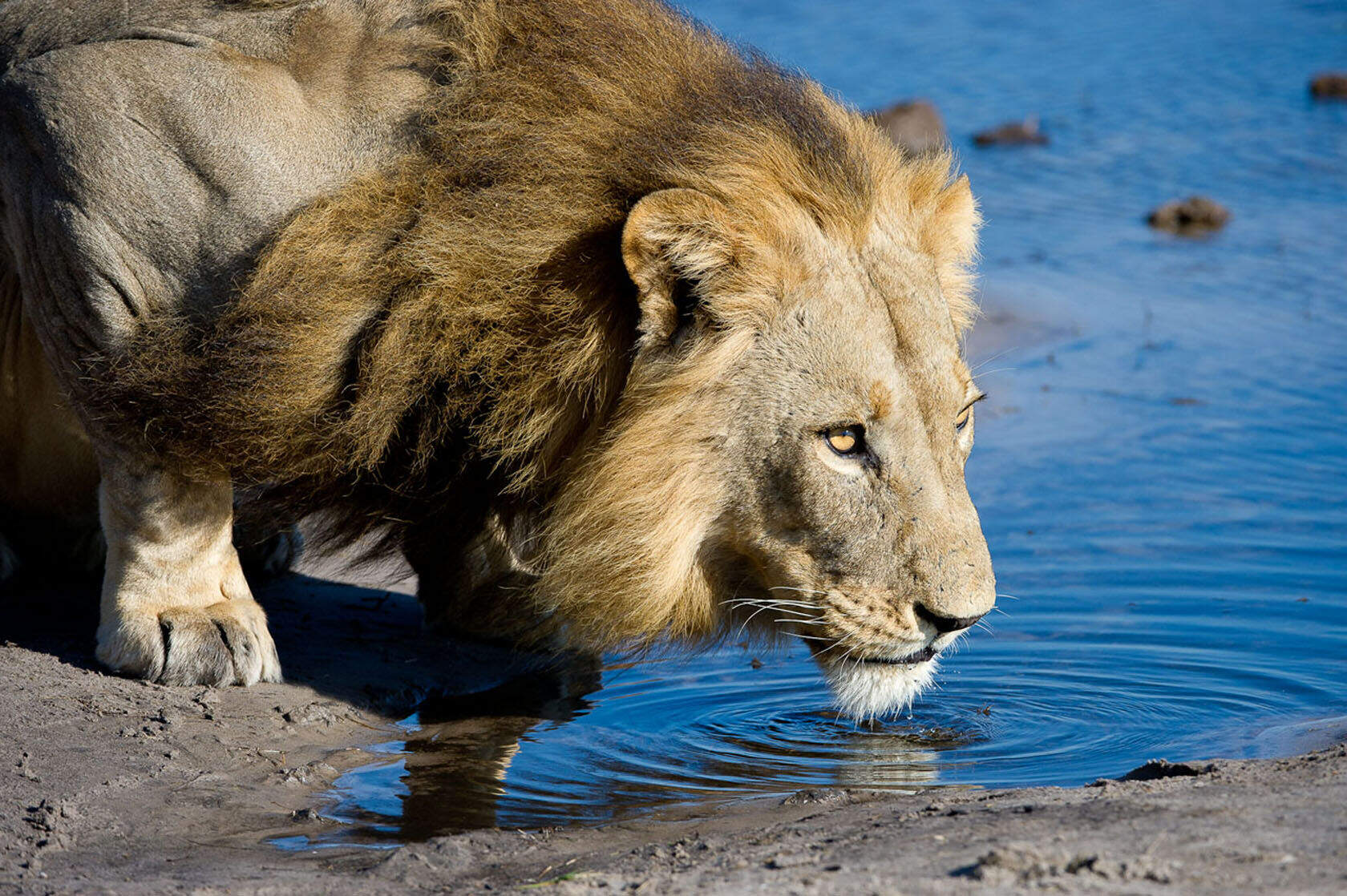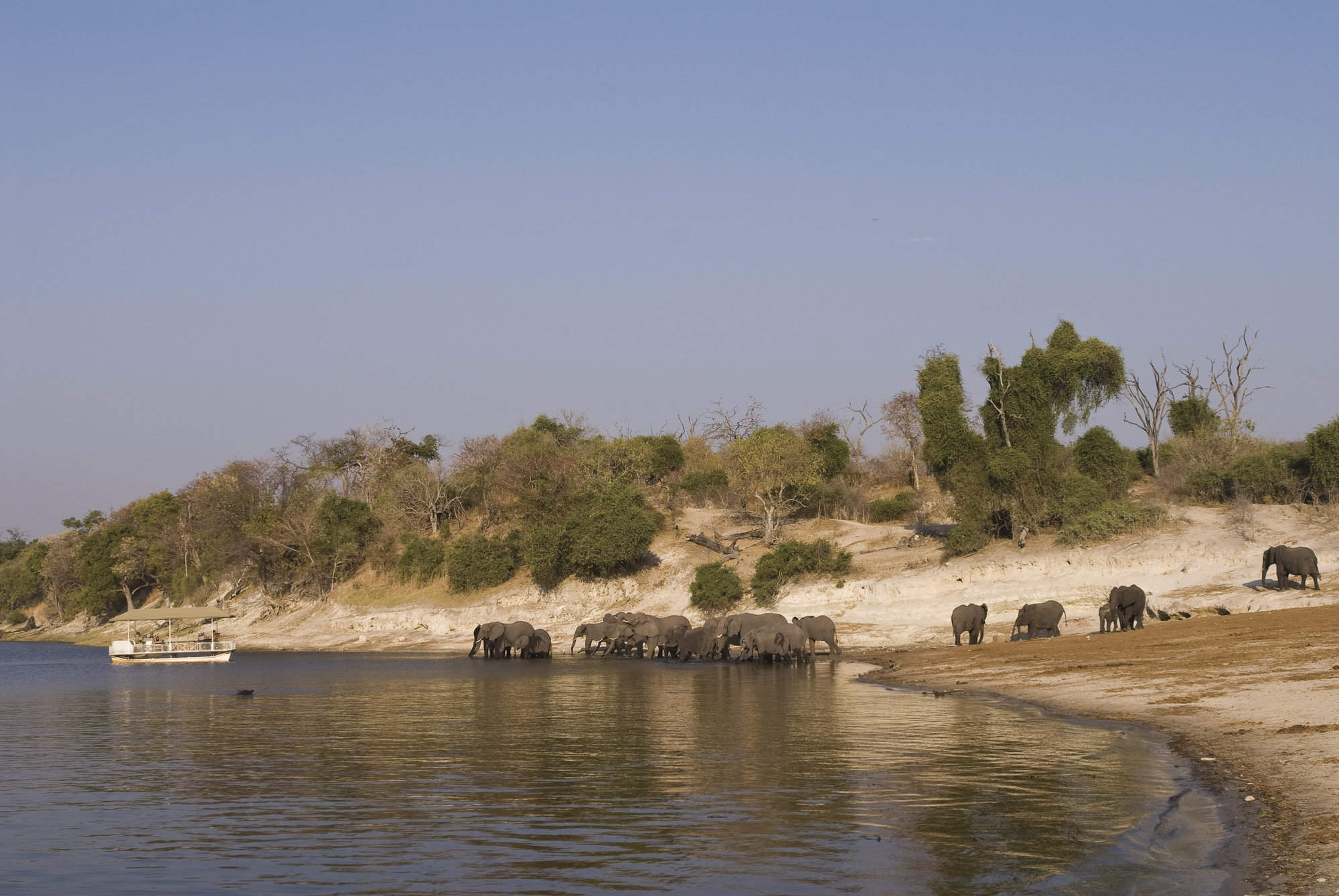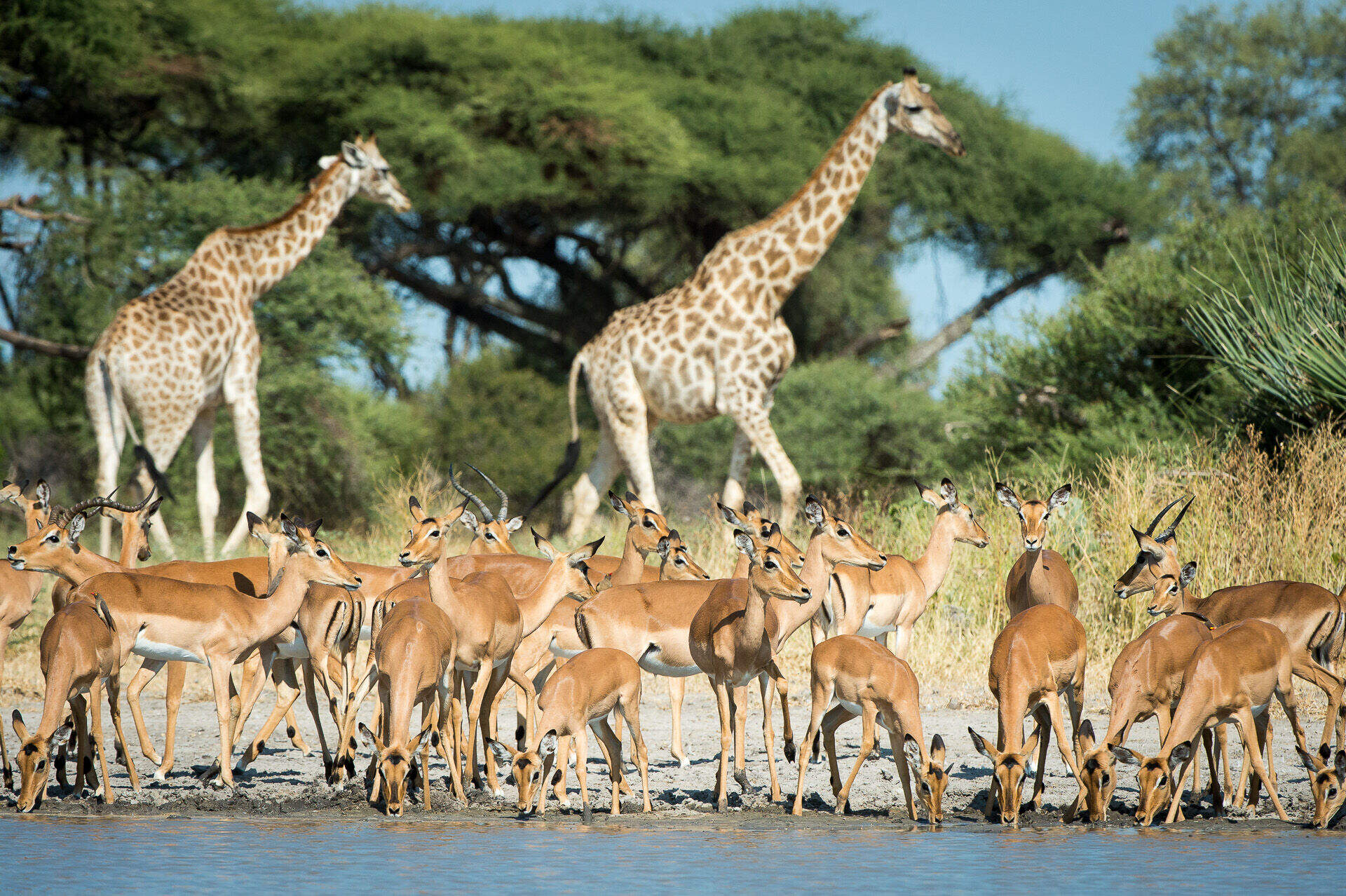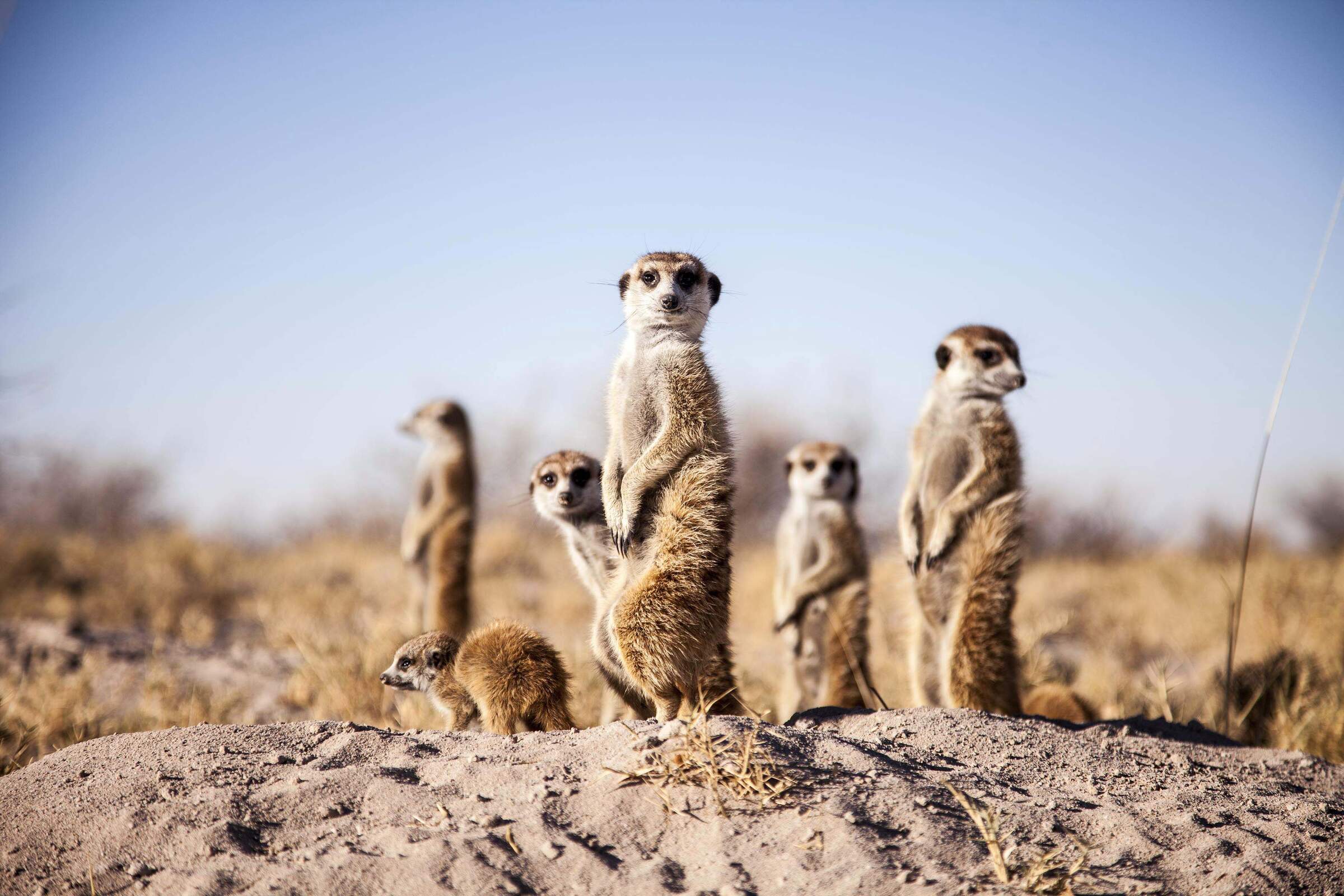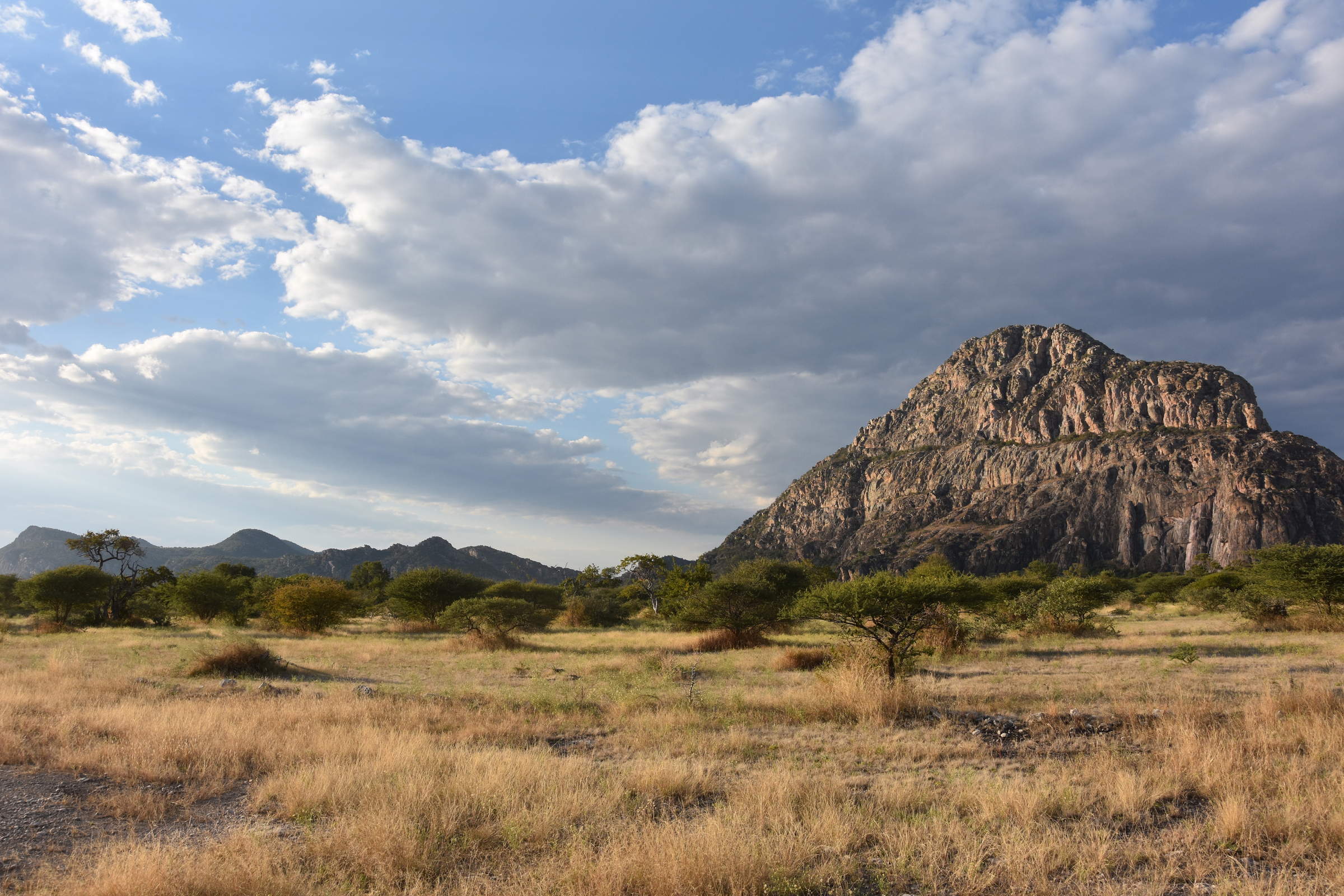
Experience the expansive views across the Kalahari
Game drives are one of the many activities available in the Central Kalahari
Central Kalahari is a great place for spotting cheetahs.
Other wildlife can also be found in good numbers.
Central Kalahari Game Reserve
Central Kalahari Game Reserve
Space: mile after mile of open space in every direction, as far as the eye can see.
The sheer scale of the Central Kalahari Game Reserve (CKGR) is breathtaking – a vast expanse of plains blending seamlessly into a sea of very gently undulating sand ridges.
This is Botswana’s largest and most remote wilderness, offering a glimpse into a timeless landscape where animals and plants have adapted to thrive in the arid conditions. Here, the resilient oryx cools itself through a unique temperature regulation, springbok draw water solely from the plants they eat, and ground squirrels shelter under their tails for relief from the sun. Even in this stark environment, blacked-maned lions and cheetahs roam, the skies belong to circling kestrels, kites and eagles, whilst secretary birds stride purposefully across the plains.
From December to March, after the rains, the Kalahari transforms. Flowers bloom in every colour, grasses turn vibrant green, and herds of grazing animals are drawn to the fresh growth, bringing life to the landscape. For the San people, who have called this place home for centuries, this season offers a time of plenty. Today, visitors may be lucky enough to witness glimpses of their ancient way of life, discovering how they survive in harmony with this harsh yet beautiful land.
With just a couple of lodges and a scattering of mobile safari campsites within the park, and a handful of lodges on large private reserves around it, the CKGR offers true wilderness. Far from crowded safari trails, it’s a place to immerse yourself in the vastness of the Kalahari, surrounded by endless skies and profound silence. A journey to the Central Kalahari Game Reserve is an invitation to disconnect, slow down, and experience the timeless magic of one of Africa’s most extraordinary landscapes.

The best Central Kalahari safaris
The Central Kalahari is an exceptional destination for those seeking solitude and adventure in Botswana’s remote wilderness though, with both remote camps offering a unique perspective on the sweeping desert views, San cultural experiences, and private mobile safaris available.
For a diverse safari experience, many of our favourite itineraries pair CKGR with Botswana’s other premier safari regions, such as the Okavango Delta or the predator-rich Savuti and Chobe. These combined safaris create an unforgettable journey across Botswana’s most varied landscapes, showcasing its abundant wildlife.
These are just ideas: our Botswana Experts will always tailor-make a trip for you.
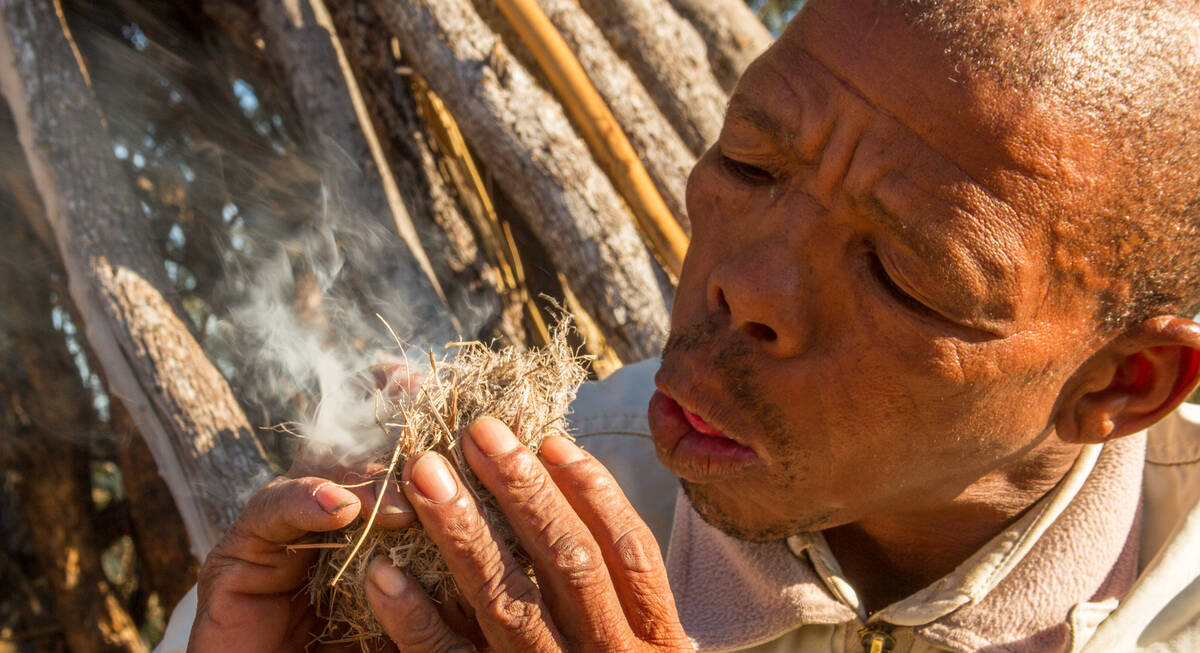
Honey Badger Safari
6 days • 2 locations
MAUN AIRPORT TO MAUN AIRPORT
Two smart sister camps offer access to the Central Kalahari Game Reserve and the heart of the Okavango Delta. Experience a spectacular range of habitats and wildlife through diversely exciting safari activities.
US$7,410 - US$10,800 per person
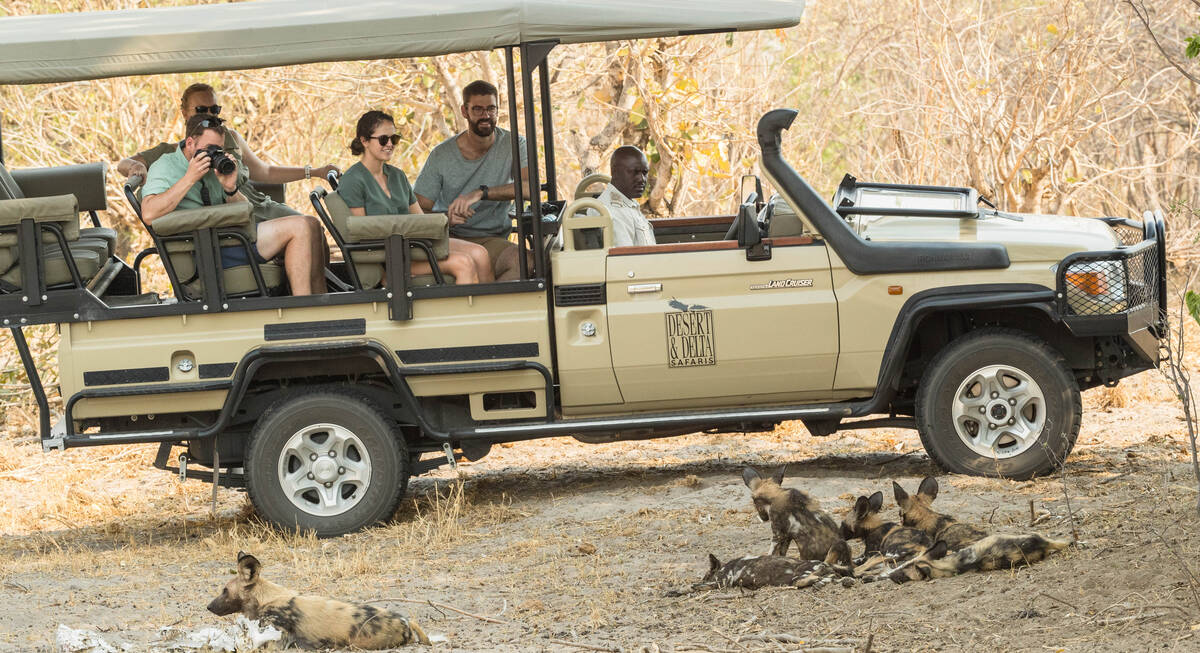
Porcupine Safari
11 days • 4 locations
MAUN AIRPORT TO MAUN AIRPORT
Visit dramatically contrasting landscapes boasting a variety of species during this exploration of Botswana’s top-safari destinations. A combination of national parks and private reserves allows for a range of activities.
US$11,780 - US$16,860 per person
Recent reviews of Central Kalahari safaris
The Central Kalahari Game Reserve offers an unparalleled safari experience, as reflected in our traveller reviews.
Visitors have described it as "a hidden gem in a very impressive environment," highlighting the "vast, open plains" and "excellent and skillful spotters" among the guides. The reserve's unique wildlife and breathtaking landscapes consistently leave guests with unforgettable memories.
Arrived 25 Feb 2025, 17 nights
"My Feb 2025 trip"
Overall rating: Excellent
Arrived 8 Feb 2025, 10 nights
"My Feb 2025 trip"
Overall rating: Excellent
Arrived 26 Jan 2025, 11 nights
"Green Season Botswana"
Overall rating: Excellent
Arrived 13 Sep 2024, 15 nights
"My Sep 2024 trip"
Overall rating: Excellent
Arrived 16 Aug 2024, 15 nights
"Our Botswana Aug 2024 trip"
Overall rating: Excellent
Arrived 9 Jul 2024, 11 nights
"My Jul 2024 trip"
Overall rating: Excellent
Arrived 30 May 2024, 12 nights
"My May 2024 trip"
Overall rating: Excellent
Arrived 17 Feb 2024, 11 nights
"My Feb 2024 trip"
Overall rating: Excellent
Arrived 7 Feb 2024, 17 nights
"This was truly very special!"
Overall rating: Excellent
Arrived 2 Apr 2023, 12 nights
"My Apr 2023 trip"
Overall rating: Good
The best Central Kalahari safari camps
There are two permanent safari camps within the game reserve itself, and each has its own charm: Tau Pan Camp, perched on a ridge with sweeping views, and Kalahari Plains Camp. This also makes a superb destination for a delightfully long and immersive private mobile safari. In addition there is a trio of lodges in private reserves just north of the main game reserve – and all offer a range of camp styles from which to experience the area’s special ecology, wildlife and San culture.
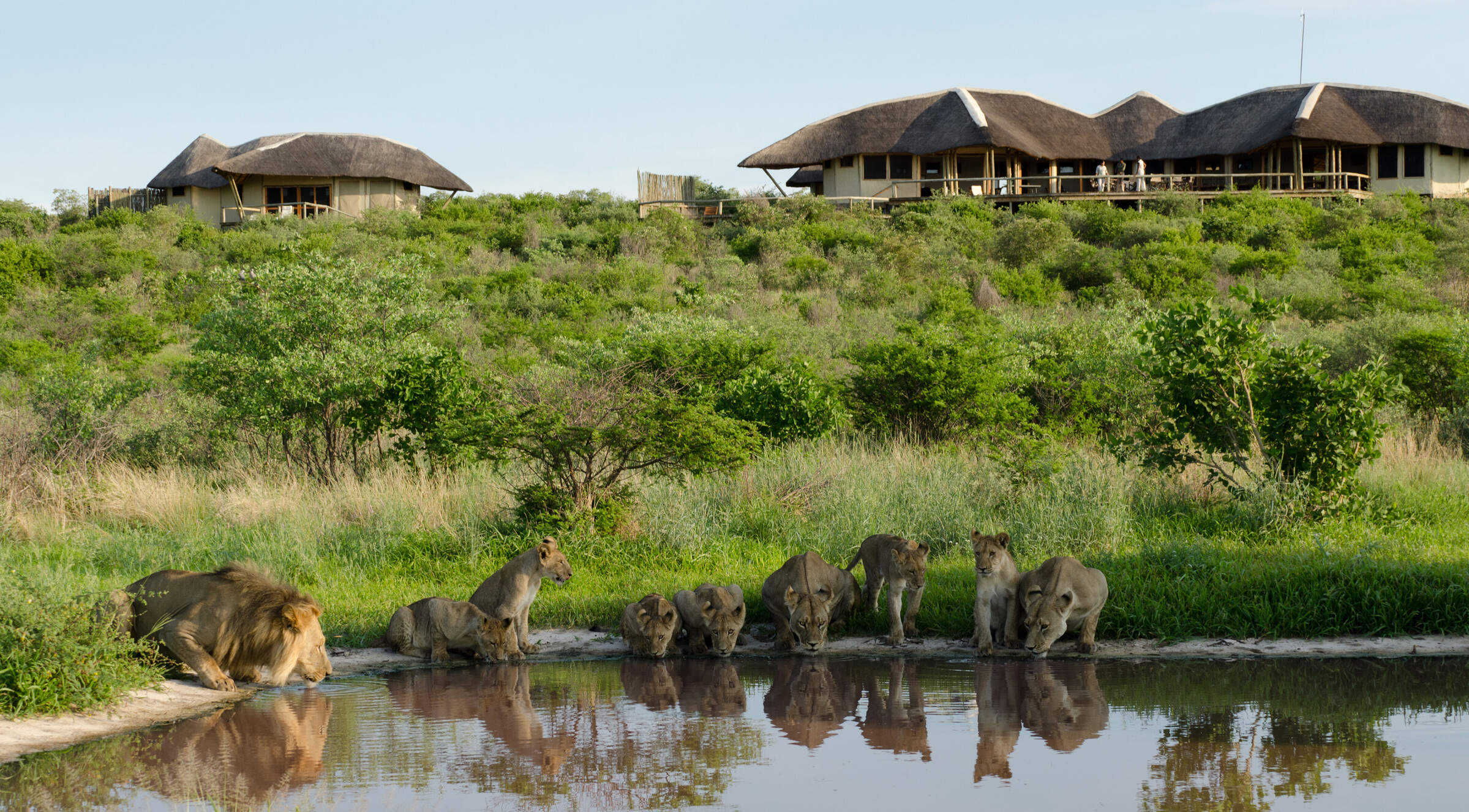
Tau Pan Camp
The comfortable Tau Pan camp inside the Central Kalahari Game Reserve offers some of Botswana's best summer game viewing and birdwatching.
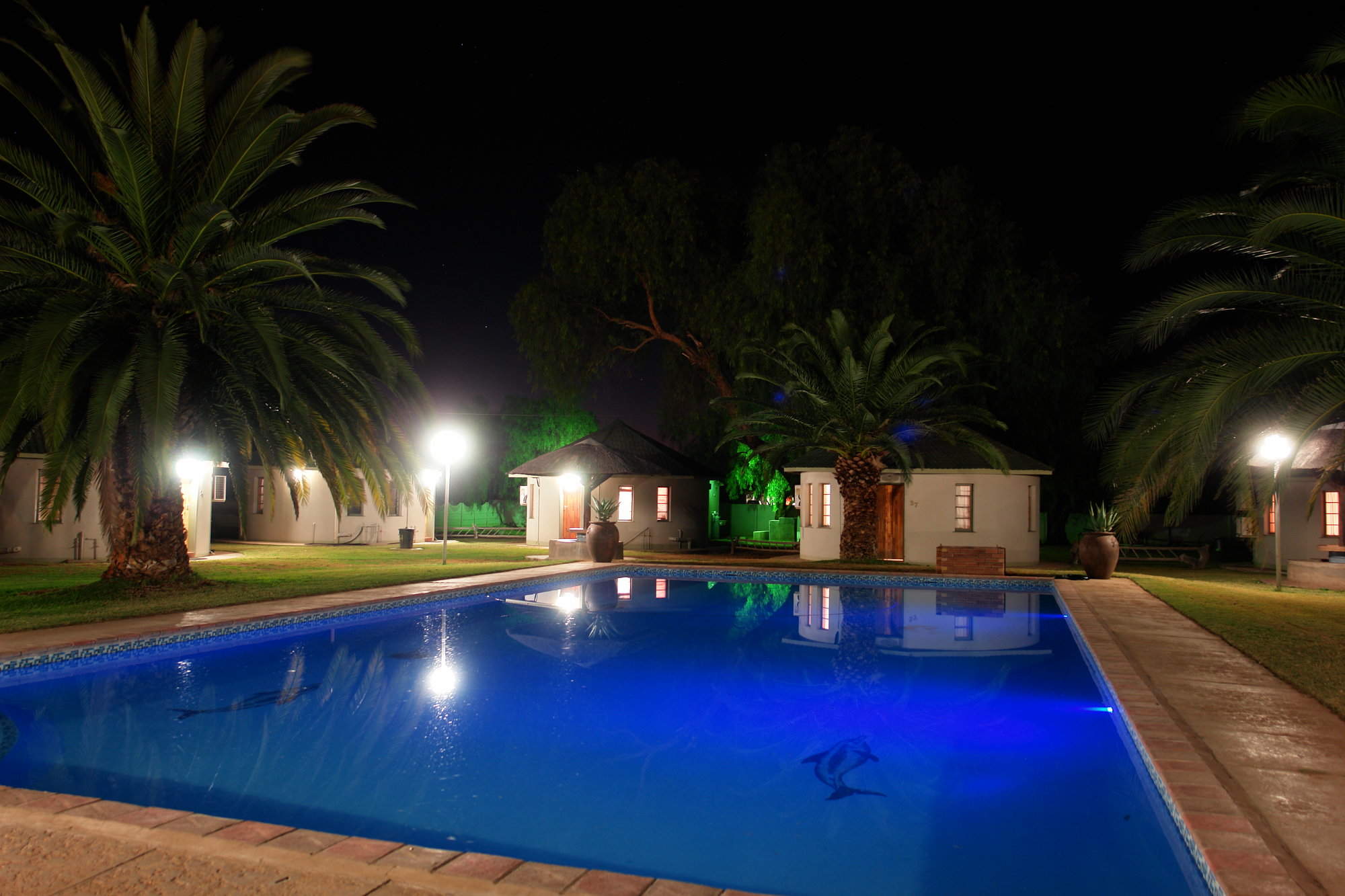
Kalahari Arms Hotel
Kalahari Arms Hotel, in the town of Ghanzi, is a practical overnight stop for travellers crossing the Kalahari to or from Namibia.
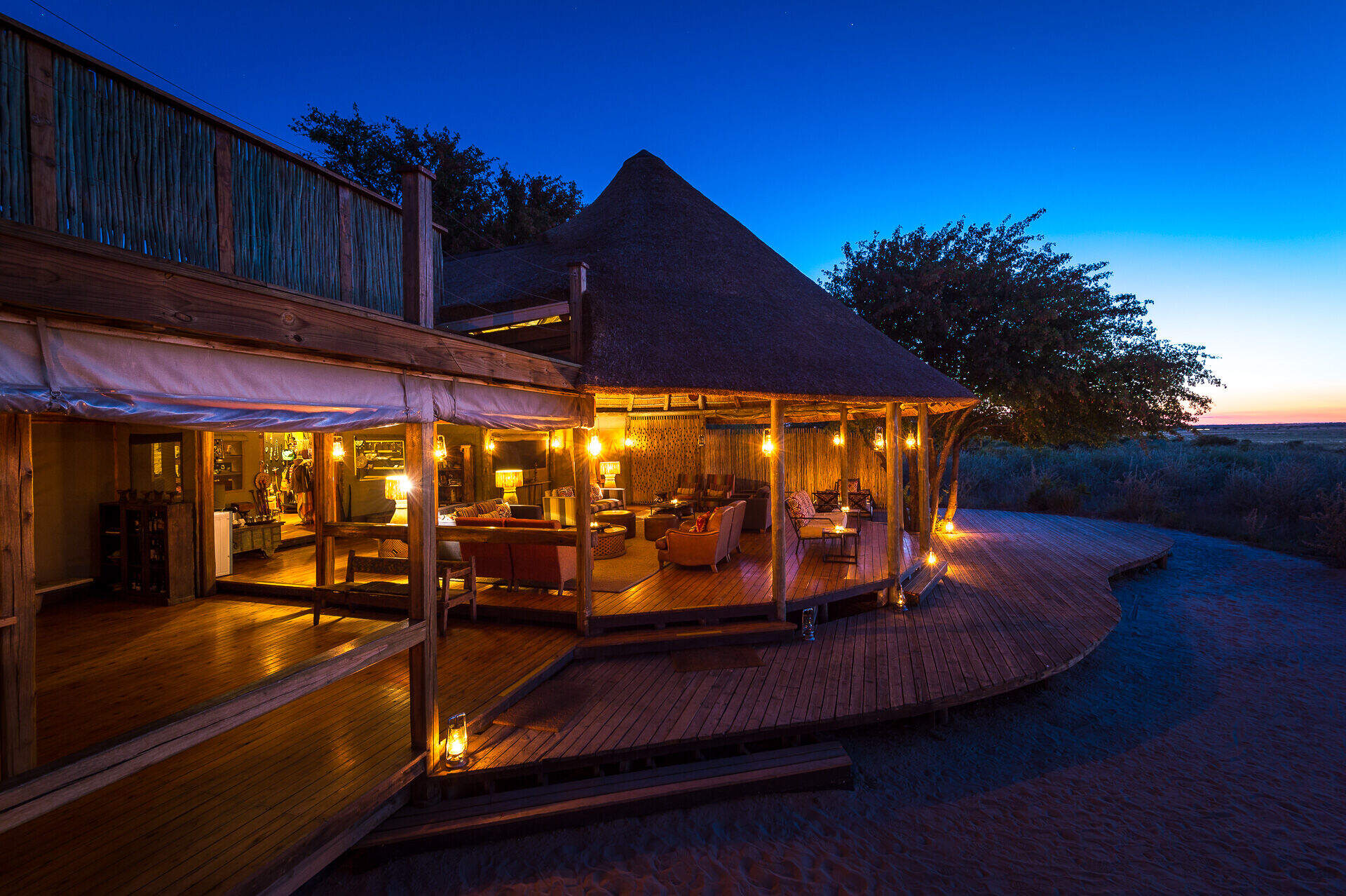
Kalahari Plains Camp
Kalahari Plains Camp, situated in the Central Kalahari Game Reserve, is a traditional tented camp offering some of Botswana's best summer (Dec–Mar) game viewing, and an introduction to authentic Bushman culture.
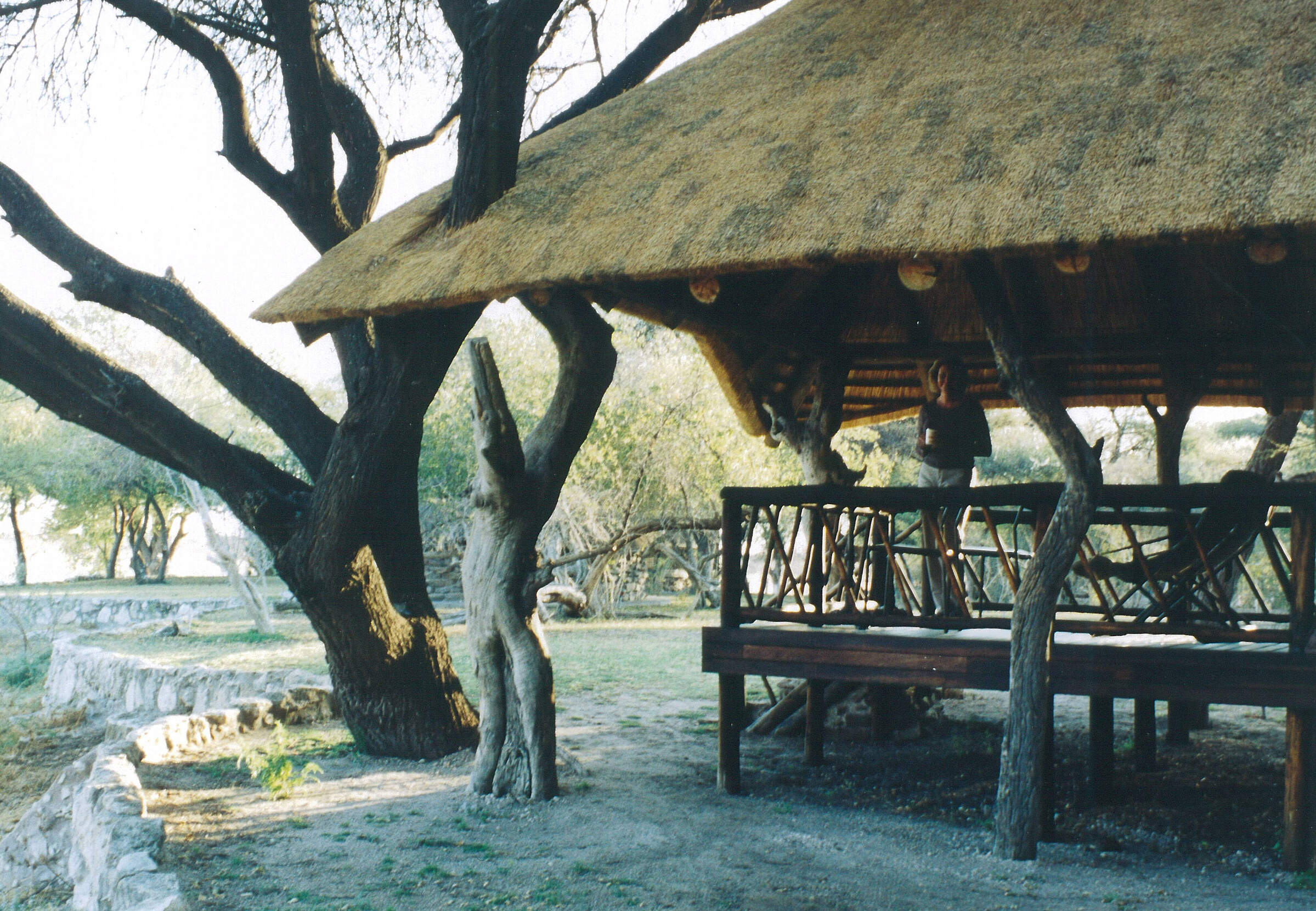
Edo's Camp
Edo's Camp is a small camp with only four spacious tents overlooking a permanent waterhole. Surrounded by 20,000 hectares of private game conservancy you can expect to see white rhino, springbok, oryx and eland here.
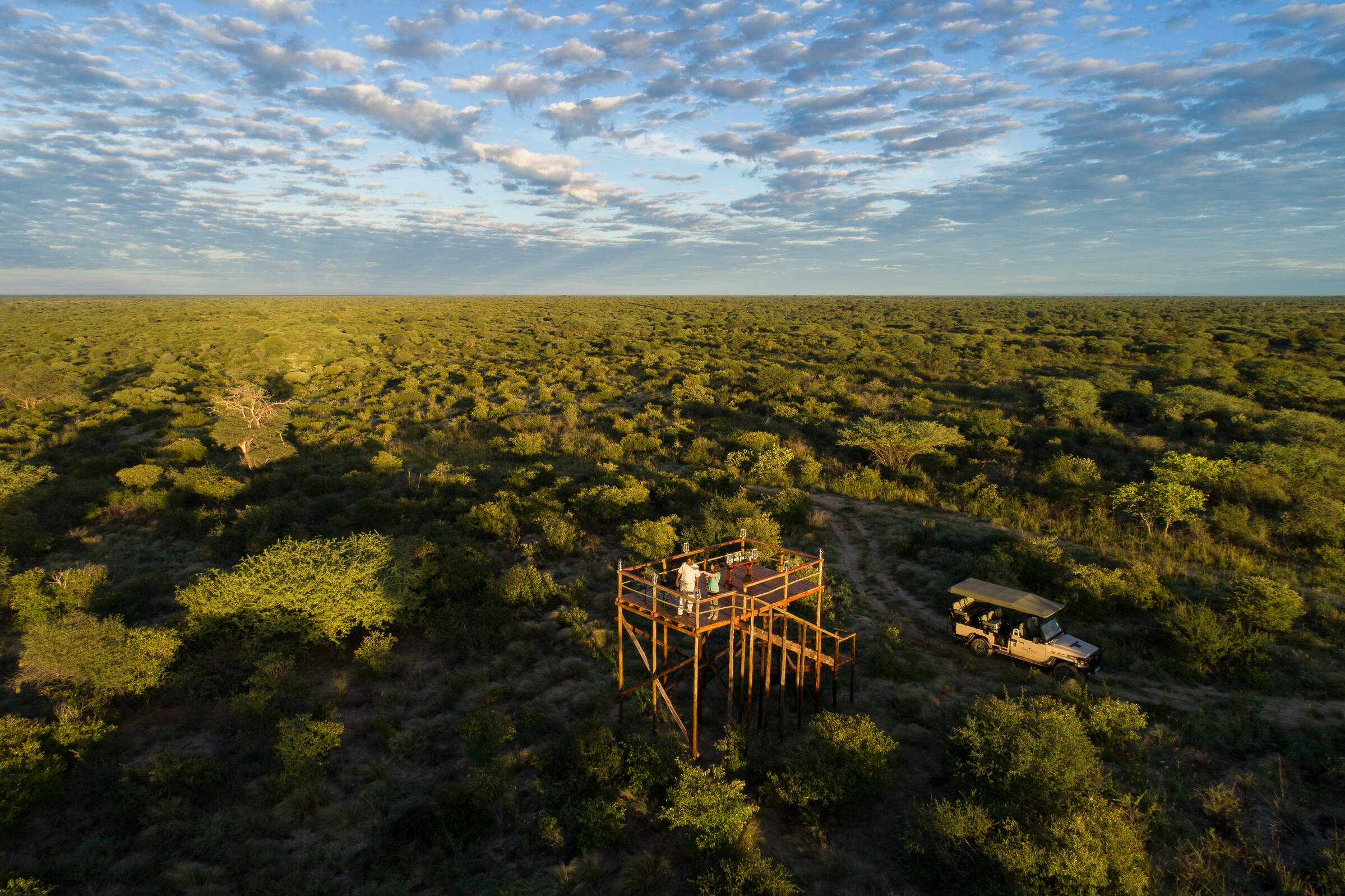
Dinaka
The newest addition to Ker and Downey Botswana’s portfolio, Dinaka is based on a private game reserve on the northern boundary of the CKGR.

Deception Valley Lodge
A private reserve on the border of the CKGR, Deception Valley Lodge offers more flexible activities than within the reserve and a particularly good Bushman experience.
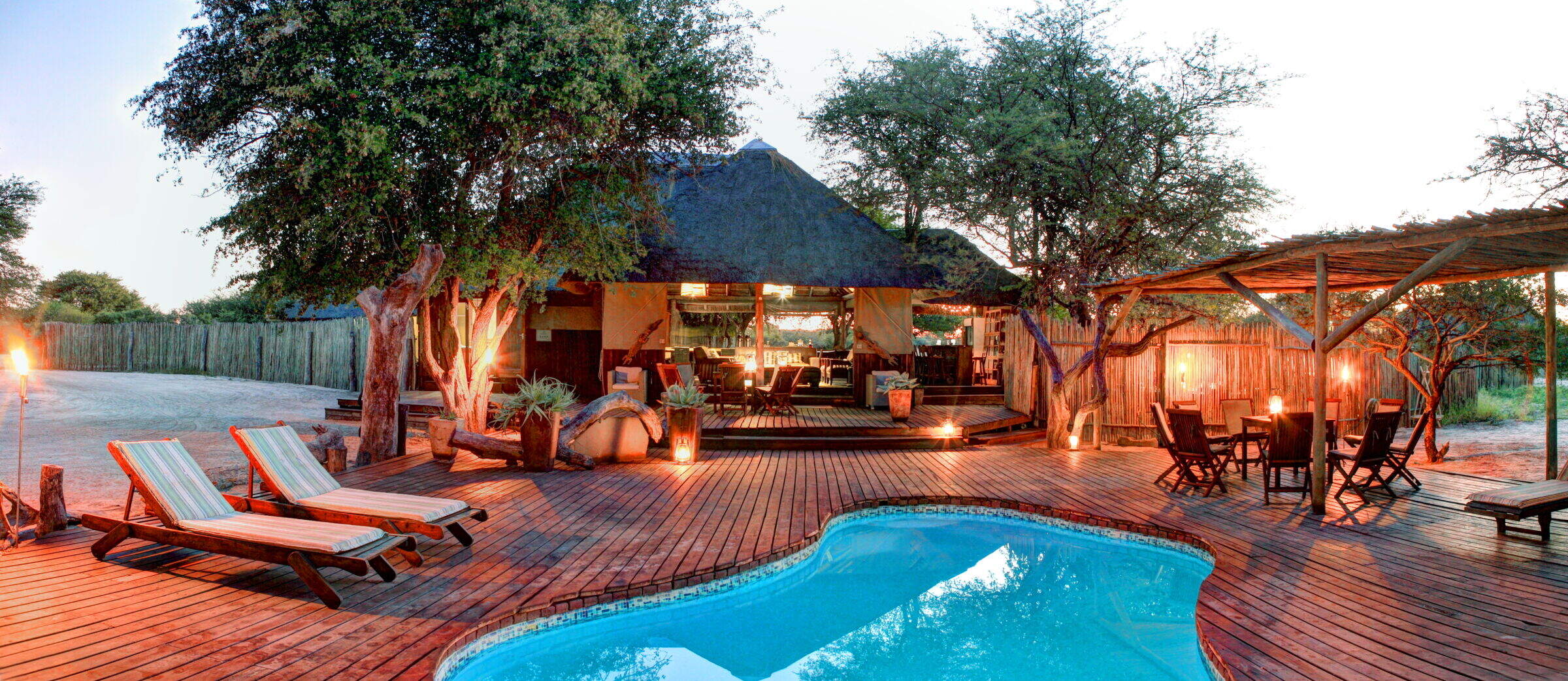
Gham Dhao Lodge
Gham Dhao Lodge is one of a number of lodges located on the northern boundary of the CKGR, offering a year-round Kalahari experience.
Central Kalahari’s wildlife hotspots
Our citizen science wildlife survey project has been collecting real-time wildlife sightings since 2018. With thousands of surveys across Botswana and the Central Kalahari, we can offer up-to-date insights on where to see key mammals, and tailor your safari to have the best opportunities to see Africa’s finest wildlife.
The ecosystems in the Central Kalahari Game Reserve differ very much from those further north in Botswana’s Okavango and Chobe regions. Consequently, a number of species are more prolific here, such as brown hyena, aardwolf, oryx, bat-eared fox and ostrich.
See our travellers' success for sightings in Central Kalahari Game Reserve. Click on a species for more detail.

91% success

91% success

86% success

75% success

50% success

40% success

33% success

31% success

28% success

27% success

16% success

7% success

3% success

3% success

0% success
The best time to visit Central Kalahari Game Reserve
The Central Kalahari Game Reserve (CKGR) experiences the same seasonal weather patterns as the rest of the country - but a completely different pattern of wildlife movements, and hence different seasonality for game-viewing.
Perhaps counterintuitively, in the Central Kalahari, the rainy season and shortly after it (December–May) is in fact the best time for game viewing. Then herbivores such as springbok and gemsbok gather in large numbers on the short-grass plains of the fossil river valleys to indulge in the sweet sprouting grasses, particularly in Deception Valley and Passarge Valley. Predator activity is then equally concentrated as lions, cheetahs, and leopards take advantage of assembled prey. Migratory birds arrive in abundance, making this a prime time for birdwatching.
The rest of the year (June–November) sees most game dispersing across the vast areas of bush rather than congregating. Then game viewing is more challenging, but predators remain active and patient tracking can yield excellent sightings. The dry season (May-October) also offers clear night skies for stargazing and a true wilderness experience.
Jan
Feb
Mar
Apr
May
Jun
Jul
Aug
Sep
Oct
Nov
Dec
Central Kalahari Game Reserve in January
January marks the peak of the rainy season, transforming the arid terrain into a lush paradise with green grasslands and seasonal waterholes. Afternoon thunderstorms are common, bringing dramatic cloud formations and brief but intense downpours. Game viewing is spectacular, particularly in Deception Valley, where large herds of springbok, gemsbok, and wildebeest congregate, drawn by the nutrient-rich grasses.
Predators, including the famous black-maned Kalahari lions, thrive during this time, taking advantage of the abundance of newborn prey. Birdlife flourishes, with migratory species in full breeding plumage, filling the skies with vibrant colours and melodious calls. The combination of dramatic weather, abundant wildlife, and verdant landscapes makes this one of the most photogenic months in the Central Kalahari Game Reserve.
- Warm temperatures with frequent afternoon thunderstorms
- Large congregations of herbivores in the valleys
- High predator activity, particularly among lions and cheetahs
- Abundant migratory birds, including flamingos and raptors
- Lush, photogenic landscapes with dramatic cloudscapes
Our view
A very good time to visit
Weather in January
Central Kalahari Game Reserve in February
February continues the lush and green conditions, maintaining high concentrations of wildlife in the valleys. The abundance of food ensures that young animals, born in previous months, are still numerous, offering excellent predator-prey interactions as they become stronger but remain vulnerable. Birdwatching is at its best, with large numbers of waders, raptors, and colourful bee-eaters making the most of the insect-rich environment.
Relatively warm evenings make night drives comfortable, allowing guests to witness nocturnal species like brown hyenas and bat-eared foxes. Although thunderstorms still occur, they are typically brief and followed by stunning sunsets, bathing the plains in golden light.
- Lush landscapes, with scattered waterholes still full
- Predators actively hunting growing but vulnerable prey
- Exceptional birdwatching, with many species in breeding plumage
- Comfortable night drives with good sightings of nocturnal wildlife
- Dramatic sunsets following short-lived thunderstorms
Our view
A good time to visit, with pros & cons
Weather in February
Central Kalahari Game Reserve in March
March marks a transitional phase, as rains gradually decrease and the landscape begins to shift. The thick grass remains green, but visibility starts to improve as the vegetation thins slightly. Animal concentrations remain high in the valleys, with predators still capitalising on the abundance of prey. The last of the migratory birds prepare to depart, making this an excellent time for bird enthusiasts to catch their final glimpses of species like European rollers and yellow-billed kites.
As the air dries, dust and golden light enhance photographic opportunities, making it an ideal time for landscape photography. With fewer visitors compared to peak months, this is also a great time to enjoy a more exclusive experience.
- Rains taper off, with increased sunny days
- Wildlife still abundant, especially in Deception and Passarge Valley
- Predator-prey interactions remain at their peak
- Final weeks for migratory birds before they depart
- Excellent photography conditions - golden light and dramatic skies
Our view
A good time to visit, with pros & cons
Weather in March
Central Kalahari Game Reserve in April
Perhaps one of the best months to visit the Central Kalahari, April signals the end of the rainy season, yet the landscape remains vibrant. Seasonal water sources start to shrink, encouraging wildlife to remain near the valleys where grazing is still good. Morning and evening temperatures cool, making game drives more comfortable.
As the grasses begin to die back, visibility improves, making it easier to spot wildlife. Predators continue to linger in the valleys, as prey remains concentrated, providing excellent game-viewing opportunities. The clearer skies and crisp air make this a fantastic month for both wildlife and landscape photography.
- Cooler mornings and evenings, with little rainfall
- Vegetation thinning, improving game-spotting opportunities
- Wildlife still concentrated in valleys, though dispersal begins
- Excellent predator sightings, particularly cheetahs and lions
- Shoulder season pricing, making it an affordable yet rewarding time
Our view
Fantastic: the very best time to visit
Weather in April
Central Kalahari Game Reserve in May
May is a lovely month – usually with clear skies after the end of the rainy season. While the grass still holds some green hues, the land starts to take on its classic semi-arid Kalahari tones. Many herbivores begin to disperse into the surrounding vegetated dunes, though some remain in the valleys, followed closely by lions and cheetahs. The drying waterholes force game to move more, requiring greater tracking skills.
Early mornings and evenings are chilly, but daytime temperatures remain pleasant. As tourism increases, availability in lodges begins to decline, making early bookings essential.
- Cool mornings and evenings, but warm, dry days
- Wildlife still present, though dispersal begins
- Good predator activity, especially around remaining water sources
- Crisp air and golden light, ideal for photography
- Shoulder season ends, with increasing demand in lodges
Our view
A very good time to visit
Weather in May
Central Kalahari Game Reserve in June
In June, the dry season continues in earnest, bringing cool, crisp days and cold nights, sometimes dropping below freezing. As vegetation thins, spotting wildlife becomes easier, though animals are more spread out. Tracking skills become crucial for good sightings.
The lack of humidity means clear, stunning skies, both during the day and at night, making stargazing exceptional. With almost no cloud cover, the Milky Way is visible in all its glory, making Central Kalahari Game Reserve one of the best locations in Africa for astronomical photography.
- Warm days, freezing nights
- Wildlife more dispersed, requiring skilled tracking
- Peak predator activity continues, with great cheetah sightings
- Clear air enhances visibility for photographers
- Stunning night skies, perfect for stargazing
Our view
Fantastic: the very best time to visit
Weather in June
Central Kalahari Game Reserve in July
July is one of the coldest months in the Central Kalahari Game Reserve with dry air, chilly mornings, and freezing nights. Despite the cold, the clear, blue skies and bright sunlight make for perfect game drives. With vegetation at its sparse stage, wildlife visibility is excellent, though animals remain dispersed across the reserve. Tracking is key, with patient efforts rewarded by sightings of lions, cheetahs, and elusive brown hyenas.
The lack of light pollution makes CKGR one of the world’s best stargazing destinations, offering phenomenal views of planets, deep-space objects, and constellations.
- Cold nights, mild days, ideal for game drives
- Wildlife remains dispersed, requiring skilled tracking
- Predators remain active, especially cheetahs and lions
- Peak season begins, meaning high demand for camps
- Exceptional stargazing, with no humidity or light pollution
Our view
Fantastic: the very best time to visit
Weather in July
Central Kalahari Game Reserve in August
August remains dry and crisp, with temperatures slowly beginning to rise during the day, though nights remain cold. Occasional dust storms sweep across the Kalahari, adding an atmospheric drama to the landscape. With thin vegetation, game spotting is at its easiest, and smaller species, like honey badgers, aardwolves, and black-backed jackals, become more visible.
The cool, dry air enhances photographic clarity, creating sharp, vibrant imagery. As the Southern Hemisphere’s constellations reach their most visible stage, August is a prime month for astrophotography.
- Dry, warm days; cold nights persist
- Excellent visibility, making game-spotting easier
- Unique small predator sightings, including honey badgers and jackals
- Peak tourist season, with high demand in lodges
- Prime conditions for astrophotography, with dazzling celestial views
Our view
Fantastic: the very best time to visit
Weather in August
Central Kalahari Game Reserve in September
As temperatures begin to rise, the Central Kalahari Game Reserve transitions toward the hottest time of the year. The remaining water sources shrink, concentrating wildlife near pans and occasional artificial waterholes. Dust in the air intensifies Kalahari’s legendary sunsets, turning the sky into a fiery display of oranges, pinks, and deep reds.
Wildlife tracking requires more effort, as herds remain widely dispersed, but big cat sightings remain rewarding. With the increased heat, many animals seek shade midday, making early morning and late afternoon game drives the most productive.
- Warmer days, cool nights, perfect for most visitors
- Wildlife increasingly dependent on remaining water sources
- Active tracking needed for optimal predator sightings
- Striking sunsets, enhanced by dust and golden light
- High season rates, requiring early bookings for accommodation
Our view
Fantastic: the very best time to visit
Weather in September
Central Kalahari Game Reserve in October
October is the hottest month in the Central Kalahari Game Reserve, with daytime temperatures exceeding 40°C/104°F. The brutal heat forces animals into the shade, making early morning and late evening the best times for game drives. Big cats and scavengers patrol the remaining waterholes, creating dramatic predator-prey encounters.
Despite the harsh conditions, October’s dry, cracked landscapes offer striking photographic opportunities, with lone acacia trees and heatwaves shimmering on the horizon. Dust storms are frequent, adding an element of raw wilderness to the experience.
- Extreme heat, often exceeding 40°C/104°F
- Predators concentrate around last remaining water sources
- Intense, dramatic survival scenes play out between prey and predator
- Unique desert-adapted species remain active in the mornings and even
- Spectacular desert photography, with surreal, arid landscapes
Our view
A good time to visit, with pros & cons
Weather in October
Central Kalahari Game Reserve in November
November signals the beginning of the rains, breaking the intense heat and triggering an instant transformation of the landscape. The first thunderstorms arrive, refreshing the dry terrain and encouraging new grass growth, which in turn attracts the first herds of springbok, gemsbok and a scattering of wildebeest back to the valleys.
The return of migratory birds marks the start of the green season, with waders, raptors, and bee-eaters flocking to the area. Lightning storms create spectacular nightscapes, offering dramatic photographic opportunities.
- Hot days with first rain showers, cooling the landscape
- Fresh grasses begin to sprout, drawing herbivores back to the valley
- Predators remain active, anticipating the return of prey
- Migratory birds return, increasing birdwatching opportunities
- Dramatic lightning storms, perfect for photographers
Our view
A good time to visit, with pros & cons
Weather in November
Central Kalahari Game Reserve in December
December fully ushers in the green season, bringing regular rain showers and cooler temperatures. The plains burst into life, with newborn springbok and gemsbok appearing in particularly large numbers, attracting lions, cheetahs, and leopards.
Birdwatchers will find December particularly rewarding, with the highest density of migratory species present. The fresh green scenery, reflective waterholes, and contrasting storm clouds create a stunning backdrop for photography. Fewer tourists during this period make it a more exclusive safari experience, with lower rates in many lodges.
- Cooler temperatures, with frequent refreshing rains
- Newborn animals appear, drawing predators
- Exceptional birdwatching, with diverse migratory species
- Dramatic scenery, with green landscapes and stormy skies
- Lower season rates, making it an affordable time to visit
Our view
A good time to visit, with pros & cons
Weather in December
The Central Kalahari Game Reserve: In Detail
The Central Kalahari Game Reserve (CKGR)
Spanning approximately 52,800km2, the Central Kalahari Game Reserve (CKGR) is one of the world’s largest and most remote game reserves, making it an ideal destination for those seeking unspoiled wilderness, diverse wildlife, and authentic cultural encounters. Known as the ultimate "remote" safari experience, CKGR is mostly inaccessible, especially in its southern regions, and remains one of Botswana’s least-visited areas, preserving its sense of solitude and pristine beauty.
CKGR’s wildlife is a captivating blend of desert-adapted species and classic African safari favourites. Understanding what you’re likely to see at different times of year and the best ways to explore the reserve is essential to creating a safari experience that perfectly matches your interests. We’ve highlighted some key elements to getting this right here, and our Botswana Experts are on hand to guide you through the finer details.
Activities on a Central Kalahari Game Reserve safari
Game drives and wildlife encounters
One of the primary activities in CKGR is game driving, best experienced in the reserve’s northern and central regions, such as Deception Valley, Passarge Valley, and Piper Pans. While the game density may not compare to Botswana’s Okavango Delta or Chobe National Park, the CKGR is home to fascinating species adapted to the harsh desert environment. Sightings often include springbok, gemsbok, giraffe, and predators like lions with distinctive black manes, cheetahs, and elusive brown hyenas. Wildlife concentrations peak from December to March, when rains transform the arid plains into verdant landscapes, attracting large herds of wildebeest, zebra, and numerous bird species, making this a thrilling time for game viewing.
Cultural experiences with the San people
CKGR offers unique cultural encounters with the San, one of the world’s oldest hunter-gatherer communities. Visitors can join guided walks led by San guides, who share their traditional knowledge of tracking animals, identifying edible plants, and surviving in the harsh desert landscape. These fascinating experiences provide a glimpse into the San's profound connection with the land, allowing visitors to learn about ancient survival skills, traditional medicines, and the spiritual significance of the Kalahari.
Guided walking safaris
Walking safaris in CKGR, often guided by expert San trackers, are an excellent way to observe the ecosystem's subtleties. These treks provide an intimate experience, where guests learn to recognise animal tracks, understand the behaviours of smaller wildlife, and observe unique plant species up close. During these walks, guides might also introduce you to ancient archaeological sites, where remnants of the Stone Age, including arrowheads and other artefacts, offer a link to the region’s rich human history.
Night drives
In some areas on the reserve's periphery, especially in private concessions, night drives are available, allowing guests to witness nocturnal animals such as aardwolves, bat-eared foxes, and genets. While nighttime exploration inside the CKGR itself is restricted, lodges on the reserve’s borders offer this option.
Stargazing
The remote location of CKGR provides an ideal setting for stargazing. With minimal light pollution, the night sky here is spectacularly clear, making it a prime destination for astronomy enthusiasts and anyone captivated by the night sky. You can often enjoy the view from campfire spots at lodges, or even from elevated sky beds available at certain camps, offering an unforgettable experience of sleeping under the vast African sky.
Wildlife in the Central Kalahari Game Reserve
Vast in size, CKGR provides a habitat for both iconic African wildlife and unique desert-adapted species. While the density of animals here may be lower than in Botswana’s wetter regions, CKGR’s expansive plains, valleys, and seasonal pans host a rich variety of resilient wildlife that thrives in this challenging landscape.
Iconic predators
CKGR is famous for its impressive population of predators, especially the Kalahari lions. Known for their distinctive dark manes, these lions are among the largest in Africa, perfectly adapted to the reserve’s semi-arid climate. The lion prides range over large territories and are connected by loose associations, with many of the lions being solitary or living in pairs. They are often sighted in Deception Valley and other northern areas, preying on the abundant herbivores and smaller prey such as porcupines that gather around seasonal water sources.
In addition to lions, CKGR is also home to cheetahs, which favour the reserve’s wide, open spaces, and low density of other predators, making this one of sub-Saharan Africa’s better places to see them. The elusive brown hyenas, a rare sight in other parts of Botswana, are also relatively common in the Kalahari. Both spotted and brown hyenas roam the reserve, with brown hyenas often scavenging for food in the harsh desert conditions.
Herbivores of the Kalahari
The herbivores in CKGR showcase fascinating adaptations to the desert environment. Springbok and gemsbok (oryx) are particularly well-suited to the arid climate, with gemsbok able to endure extreme heat and go without surface water for extended periods. These antelope are frequently seen in the open plains and around pans, where they graze on grasses and browse on desert shrubs, and are often seen on the short grass plains during the rains in herds exceeding a hundred individuals.
Red hartebeest, eland, wildebeest, kudu and giraffe can also be found in good numbers. Wildebeest and zebra are also found throughout the reserve, with large herds often gathering during the rainy season from December to March. This seasonal abundance attracts predators, making it an exciting time for wildlife enthusiasts to visit.
Smaller mammals and unique species
The harsh environment of CKGR is also home to a range of smaller mammals that are fascinating to observe. Meerkats are a visitor favourite, often spotted in social groups, foraging or basking in the sun. These charismatic creatures have developed strong social structures and effective predator awareness behaviours, often seen standing upright to scan for danger. Other small mammals include bat-eared foxes and ground squirrels, which are well adapted to the reserve’s semi-desert conditions. Aardwolves, though elusive, are occasionally spotted at night, feasting on termites and insects in areas around campsites and lodges.
Birds and reptiles
CKGR also offers a wealth of avian and reptilian life. Aside from the Kalahari’s famed bird species, CKGR is home to several fascinating reptiles, including the Kalahari tent tortoise and barking gecko, which are uniquely adapted to the hot, arid environment. Birdlife includes large raptors like martial eagles and bateleurs, which prey on smaller mammals, birds, and reptiles. The open grasslands and sparsely vegetated regions provide excellent hunting grounds for these birds of prey. For keen birdwatchers check out our dedicated Central Kalahari birdwatching information.
Seasonal pans and migratory species
The seasonal pans scattered across CKGR, such as those in Deception Valley and Piper Pans, provide critical resources during the rainy season. As the pans fill with water from December to March, they attract a diverse range of wildlife, including large herbivores like kudu and giraffe. With the influx of water, migratory species arrive, transforming the pans into temporary oases in the desert. This seasonal abundance draws both herbivores and predators, setting the stage for dynamic wildlife interactions that can be observed from various viewing points across CKGR.
Best time to visit
The best time to experience CKGR’s wildlife is during the rainy season, from December to March. During this period, the plains turn green, and wildlife concentrations increase as animals gather around the seasonal water sources. The cooler temperatures and availability of water make this season ideal for observing both large mammals and unique desert species. However, the dry season, from April to October, provides opportunities for more remote encounters with resilient species adapted to surviving in the harsher, drier conditions of the Kalahari.
Birdwatching in the Central Kalahari Game Reserve
The largest of the birds, the ostrich and kori bustard, are doing extremely well and are commonly spotted. The reserve’s remoteness and serene landscape enhance the beauty of each sighting, making it a must-visit destination for birding enthusiasts looking to explore Botswana's arid habitats.
Birdwatching in CKGR is particularly rewarding during the wet season, from December to March, when migratory species arrive, and many resident species are breeding.
Key bird species
Bird species in CKGR include a mix of raptors, desert specialists, and migratory visitors, offering an exciting range of sightings for birdwatchers:
- Raptors: The open plains and valleys of CKGR are prime habitats for birds of prey. The Central Kalahari’s most common raptor is the pale-chanting goshawk; there are also a good number of black-shouldered kites, rock kestrels, bateleurs, black-breasted and martial eagles. The brown snake eagle and tawny eagle are also frequently seen soaring over the reserve in search of prey. During the breeding season, lanner falcons and kestrels are more active, especially around the Deception Valley area.
- Kalahari Desert specialists: CKGR is home to several bird species uniquely adapted to the arid environment. The Kalahari scrub-robin, ant-eating chat, and the elusive Burchell's sandgrouse are examples of birds that have developed behaviours to thrive in the desert. Sandgrouse, in particular, are fascinating to observe. During the day they can be difficult to spot with their excellent camouflage, but during the mornings large numbers can be seen on their daily journeys to water sources, often accompanied by chicks. Large flocks of red-billed quelea are also common, often seen as they swarm down from trees to drink or in search of food.
- Ostriches: These iconic birds are commonly seen striding across the open plains of CKGR. Observing a group of ostriches moving through the landscape is a memorable experience, especially when they engage in display behaviours or courtship rituals.
- Waterbirds at seasonal pans: In the wet season, CKGR’s seasonal pans attract waterbirds, including species like flamingos, pelicans, and storks. The presence of water draws a unique mix of species, sometimes including African spoonbills, blacksmith lapwings, and red-billed teal. These sightings can be especially common at areas like Piper Pans and Sunday Pan, which are known to fill with water after rains.
- Deception Valley: Known for its rich biodiversity, Deception Valley offers excellent birdwatching opportunities, especially around waterholes and shaded areas where smaller birds gather. Birders may spot crimson-breasted shrikes, southern yellow-billed hornbills, and various lark species in this area.
- Passarge Valley: This region’s varied terrain provides habitats for both woodland and open-country birds. The valley is home to kori bustards, the world’s heaviest flying bird, and secretary birds, which are often spotted stalking prey on the ground.
- Piper Pans: During the wet season, Piper Pans are a haven for migratory waterbirds. The pans are ideal for spotting large flocks of flamingos and a range of ducks and waders.
While birdwatching in CKGR can be enjoyable year-round, the best time is during the rainy season (December to March). The abundance of water transforms the landscape and attracts both migratory and resident species, offering birdwatchers a diverse array of sightings. Early morning and late afternoon are ideal times for birdwatching, as the cooler temperatures bring birds out in search of food, making it easier to observe them.
Birdwatching essentials
Given the vast, rugged environment of CKGR, birdwatchers are advised to bring binoculars with high magnification, a field guide for identifying species, and plenty of water. A telephoto camera lens can also be beneficial for capturing distant sightings of larger raptors and waterbirds.
How long to stay in Central Kalahari
For those opting for a private mobile safari, a longer stay – typically 5 to 8 nights – would be better. This extended timeframe allows travellers to venture deeper into the vast expanse of CKGR, uncovering more remote parts of the reserve and experiencing the full breadth of its beauty. Longer mobile safaris also provide flexibility to adapt to wildlife movements, which is particularly valuable in this arid environment.
The duration of your stay in CKGR will also depend on your broader itinerary, as many travellers combine a Kalahari safari with other iconic Botswana destinations, such as the Okavango Delta, Chobe or Savuti region.
Map of Central Kalahari Game Reserve
The Central Kalahari Game Reserve (CKGR) is one of Africa's most remote wilderness areas, covering an impressive 52,000km2 in the heart of Botswana.
This vast expanse of semi-arid desert features endless open plains, ancient riverbeds, and gentle sand ridges, highlighted on this map and recognisable from above by the reserve’s unique blend of rugged, untouched terrain.
Located approximately 300km from Maun, the primary gateway to CKGR, the reserve is positioned well for combining with other iconic destinations, including the Okavango Delta, a 60-minute charter flight to the north. You can also connect to Chobe National Park via a short flight to Kasane or extend your trip to Victoria Falls, creating a seamless itinerary.
The larger map pins mark safari lodges within and bordering CKGR, while smaller pins indicate other camps throughout Botswana, from the Okavango Delta to the Makgadikgadi Pans.
Central Kalahari Game Reserve: Safaris
These are just ideas, so contact us us to tailor your ideal safari experience.

Honey Badger Safari
6 days • 2 locations
MAUN AIRPORT TO MAUN AIRPORT
Two smart sister camps offer access to the Central Kalahari Game Reserve and the heart of the Okavango Delta. Experience a spectacular range of habitats and wildlife through diversely exciting safari activities.
US$7,410 - US$10,800 per person

Porcupine Safari
11 days • 4 locations
MAUN AIRPORT TO MAUN AIRPORT
Visit dramatically contrasting landscapes boasting a variety of species during this exploration of Botswana’s top-safari destinations. A combination of national parks and private reserves allows for a range of activities.
US$11,780 - US$16,860 per person
Our 7 lodges and safari camps in Central Kalahari Game Reserve
Until 2009, visitors to the CKGR had two accommodation options: stay either within the park, using the park’s demarcated campsites, or at one of the lodges outside the park boundary, which are not close enough for day trips. Now, however, two lodges are situated inside the park boundary, which opens up the reserve to those who would not consider camping.
In addition, here we've included details of the camps, which lie just on the northern site of Central Kalahari. Ask us for more details of what's where, and what's likely to suit you best!

Tau Pan Camp
The comfortable Tau Pan camp inside the Central Kalahari Game Reserve offers some of Botswana's best summer game viewing and birdwatching.

Kalahari Arms Hotel
Kalahari Arms Hotel, in the town of Ghanzi, is a practical overnight stop for travellers crossing the Kalahari to or from Namibia.

Kalahari Plains Camp
Kalahari Plains Camp, situated in the Central Kalahari Game Reserve, is a traditional tented camp offering some of Botswana's best summer (Dec–Mar) game viewing, and an introduction to authentic Bushman culture.

Edo's Camp
Edo's Camp is a small camp with only four spacious tents overlooking a permanent waterhole. Surrounded by 20,000 hectares of private game conservancy you can expect to see white rhino, springbok, oryx and eland here.

Deception Valley Lodge
A private reserve on the border of the CKGR, Deception Valley Lodge offers more flexible activities than within the reserve and a particularly good Bushman experience.

Gham Dhao Lodge
Gham Dhao Lodge is one of a number of lodges located on the northern boundary of the CKGR, offering a year-round Kalahari experience.
Excursions in Central Kalahari Game Reserve
Optional, extra day-trips and excursions that are possible while you’re staying in Central Kalahari Game Reserve. Talk to us: these excursions are usually best arranged before you go.

Helicopter Flight - Botswana
Various: from 30 minutes to half a day.
Low-flying, agile and offering superb views, helicopters are an ideal way to move around the Okavango Delta.You can use them instead of fixed-wing inter-lodge transfers or as an addition to other wildlife watching activities, and of course, helicopters can hover to allow that perfect pic, whereas fixed-wings can’t.
More about Helicopter Flight
Looking for inspiration on where to travel next?
Visit our trip chooser to explore your options and find inspiration for your perfect African adventure
Inspire meFrequently Asked Questions
Central Kalahari Game Reserve FAQs
To help you plan your Expert Africa adventure to the Central Kalahari Game Reserve, we’ve put together some essential information on how to choose the perfect safari experience for your interests.
You’ll find answers here to frequently asked questions, including a comparison between safaris in the Central Kalahari and the Great Salt Pans, and an in-depth look at what a private mobile safari experience is like in CKGR.
Find out when the best times of year to see the iconic black-maned Kalahari lions or photograph the migratory herds that transform the desert plains during the rainy season.
Whether you’re seeking solitude, adventure, or a deeper connection with nature, our FAQ guide to the Central Kalahari Game Reserve will help you plan an unforgettable safari experience.
How do you get to Central Kalahari Game Reserve?
From Maun to CKGR:
- By air: The quickest way to reach CKGR from Maun is by charter flight to one of the reserve's airstrips, such as Xade or Deception Valley. This flight typically takes 45 minutes to an hour, allowing you to skip the long overland journey and start your safari adventure right away. Upon arrival, you’ll be met by your guide and transferred to your safari lodge or camp.
- By road: For those on a private mobile safari, traveling by road offers a scenic, immersive experience. The journey from Maun to CKGR is about 250km, taking around 4–6 hours, depending on the chosen entry point (Matswere or Tsau Gate). This route requires a 4WD vehicle, as roads can be rough and sandy, especially in the dry season, and the journey is often split over a couple of days, stopping at campsites en-route to explore additional wildlife areas.
- By air: Most travellers fly from their nearest Delta airstrip directly into CKGR. Charter flights connect the key Okavango airstrips with CKGR’s airstrips, making for a convenient transfer between these iconic wilderness areas. Flight times range from 60 to 90 minutes, depending on the location within the Delta. Upon arrival, we’ll arrange for your camp or lodge within CKGR to meet you and transfer you by 4WD to your camp. This option provides a seamless transition from the Delta’s lush waterways to CKGR’s arid plains, and allows you to experience a range of Botswana’s diverse landscapes within a single safari trip.
How do you get around Central Kalahari?
Exploring CKGR on safari
- Guided game drives: Most visitors explore CKGR on the guided game drives offered by their chosen safari lodge. These are typically conducted in open-sided, 4WD safari vehicles, led by experienced guides who know the terrain, wildlife behaviour, and optimal routes through the reserve at a given time. Game drives are generally available in the mornings and afternoons, with the option for full-day expeditions that allow deeper exploration of areas like Deception Valley and Passarge Valley.
- Private mobile camping safaris: For those looking to immerse themselves fully in CKGR’s wilderness, mobile camping safaris are an excellent choice. These guided safaris involve traveling between different parts of the reserve and setting up camps at scenic locations. With a mobile safari, you can cover multiple regions, staying close to wildlife activity and adapting to seasonal changes. Some operators offer semi-permanent mobile camps, providing a touch of comfort while still allowing for an authentic bush experience.
- Walking safaris: While limited, certain areas in CKGR offer the option of guided walking safaris. These experiences are typically arranged by select operators and offer an intimate way to explore the desert ecosystem on foot. Walking safaris focus on tracking animals, learning about the landscape, and understanding smaller details of the environment that are often missed from a vehicle.
- Self-drive safaris: CKGR is a popular destination for adventurous travellers on self-drive 4WD safaris, however this is not an option that we offer at Expert Africa as assistance in the reserve is minimal. The roads can be challenging, with thick sand, especially during the dry season, and muddy or impassable sections after rains. Self-drive travel here requires a great deal of remote, 4WD travel experience and thorough preparation. If you have the necessary bush and driving skills to undertake this kind of trip, we have detailed information on preparation, park logistics and GPS driving routes in the Bradt Safari Guide to Botswana.
A private mobile safari in Central Kalahari
On a mobile safari, your camp moves with you, allowing you to explore various regions of the reserve and follow wildlife patterns, seasonal changes, and your own pace. At Expert Africa, we work with dedicated, professional guides that we know well to create these overland itineraries around the Central Kalahari, sometimes in combination with the Okavango Delta’s heartland or Chobe, so do get in touch if you’d like to know more about a private mobile safari in Botswana.
Here’s a breakdown of how a mobile safari works, what you can expect, and what you’ll likely see and do on this kind of trip:
How a private mobile safari works
A private mobile safari is designed to be fully self-sufficient, with a dedicated team that includes a professional safari guide, chef, and friendly camp crew. We’ll customise your itinerary and schedule based on your interests, preferred pace, and the season, making each mobile safari unique. Once you’re on location, each day your camp crew will set up a comfortable campsite in a designated area, complete with spacious tents, en-suite bush bathrooms, and an open dining tent area.
Meals are freshly prepared by the camp chef and served at the dining area, often under the open sky or around the campfire. After breakfast, you’ll head out for morning game drives, return for lunch and relaxation in the shade, and embark on another game drive in the late afternoon. Occasionally, full-day drives will be available to explore deep into the reserve. Evenings are spent back at camp, enjoying a hearty dinner and stories by the campfire under a spectacular night sky.
How long to go for
Most private mobile safaris in CKGR range from 4 to 10 days, depending on the level of exploration you wish to achieve, and whether you’d like to combine the Central Kalahari region with another safari region, like the Okavango or Chobe.
A 4 to 5 day safari allows you to explore some of the main highlights, such as Deception Valley and Piper Pans, while a longer 8 to 10 day itinerary lets you delve deeper into the reserve’s less-visited areas like Sunday Pan and Passarge Valley, with more time to appreciate the changing landscapes and follow wildlife across different regions. Due to the reserve’s vastness and varied terrain, a longer safari provides a richer experience, allowing you to witness the diversity of CKGR’s ecosystem.
What you could see
The Central Kalahari’s wildlife is unique and diverse, particularly adapted to the arid, semi-desert conditions. During the rainy season (December to March), the reserve comes alive with greenery, attracting migratory species and large herds of herbivores like springbok, gemsbok (oryx), wildebeest, and zebra, which in turn attract predators. This is an excellent time to spot CKGR’s iconic black-maned Kalahari lions, as well as cheetahs, which thrive in the open plains.
Throughout the year, you’ll also encounter other fascinating desert-adapted species, including brown hyenas, bat-eared foxes, and a range of smaller mammals like meerkats. Birdlife is varied, with raptors such as bateleur eagles and martial eagles frequently spotted, alongside other arid-region specialists like the Kalahari scrub-robin and Burchell's sandgrouse.
What you will do
A private mobile safari in CKGR is all about tailored exploration and connecting with the environment at a deeper level. Activities include:
- Guided game drives: Daily game drives are the core of the safari experience, taking you to different regions of CKGR to spot wildlife, appreciate the landscape, and observe the subtle details of desert life. Drives are conducted in specially equipped 4WD vehicles, ideal for navigating CKGR’s sandy tracks and expansive plains.
- Nature walks: In certain areas, guided walking safaris can be arranged. These walks, led by professional guides, focus on tracking wildlife, learning about local plants, and observing smaller animals and insects. Walking gives you a close-up perspective of the ecosystem, revealing the delicate balance of life in the desert.
- Stargazing: CKGR’s remote location offers an unmatched stargazing experience, with minimal light pollution and crystal-clear skies. Evenings around the campfire provide an ideal setting to gaze at the stars, with the Milky Way often visible in vivid detail. Some mobile safari setups even offer elevated sky beds, allowing you to sleep under the stars for a truly magical experience.
- Cultural insights: If arranged, some mobile safaris in CKGR include interactions with local San guides, who share insights into traditional bushcraft, tracking, and survival skills honed over centuries. This can add a meaningful cultural dimension to the safari, giving you an appreciation of the San people's deep connection to the land.
Central Kalahari’s private reserves
The private reserves offer an even quieter, more intimate setting, with limited guest numbers ensuring wildlife sightings come without the presence of other lodge or self-drive vehicles. They also allow off-road driving, night safaris, and bush walks, offering opportunities to spot nocturnal wildlife and immerse yourself more deeply in the wilderness. For photography enthusiasts, hides overlooking waterholes provide great vantage points to capture Botswana’s incredible wildlife, with a cold drink never far from hand.
Perhaps the real highlight of these reserves though is the chance to spend time with the San Bushmen. These guided experiences offer profound insights into their ancient culture, and showcase their phenomenal tracking skills, foraging, and storytelling, all of which connect them to this Kalahari region.
And the lodges themselves enhance the appeal: Dinaka features elevated safari tents overlooking a waterhole, perfect for year-round wildlife viewing; Deception Valley Lodge blends luxury with exceptional guiding across its 150km2 concession, while Gham Dhao Lodge offers family-friendly sky decks for stargazing. For travellers seeking exclusivity, cultural immersion, and diverse activities, private reserves north of the CKGR are well worth considering for a super Kalahari experience.
Self-drive in Central Kalahari Game Reserve
For those intent on self-driving, a journey into CKGR is possible from Maun, but it requires considerable preparation, advanced 4WD skills, and the ability to navigate remote and sandy terrain independently. Travellers should be prepared to go days without encountering others and need thorough knowledge of desert travel.
While a self-drive adventure can be rewarding, we encourage you to consider a private mobile safari instead. This option allows you to explore CKGR with an experienced guide, access prime wildlife areas, and enjoy fully equipped mobile camps set up just for you. A guided safari provides the same sense of adventure, minus the logistical challenges and risks, letting you focus on the beauty of Botswana's incredible landscapes and wildlife.
Central Kalahari or the Great Salt Pans?
While both destinations are located in Botswana’s arid interior and share similar desert environments, the safari experiences they offer differ greatly in terms of wildlife viewing, terrain, and seasonal activities. In comparing the two safari areas, there are some key points of difference:
Wildlife viewing:
- Central Kalahari Game Reserve: CKGR is known for wildlife which has adapted to the semi-desert environment. The reserve is especially famous for its black-maned Kalahari lions, which roam the open plains and are often spotted on game drives. In addition, smaller mammals like meerkats and bat-eared foxes thrive in this environment, making CKGR a prime destination for observing both large and smaller desert-adapted species. During the rainy season (December to March), the reserve transforms, attracting large herds of herbivores like springbok, gemsbok, wildebeest, and zebra, which in turn bring increased predators numbers.
- The Great Salt Pans: The Great Salt Pans, including Makgadikgadi Pans and Nxai Pan, offer a very different safari experience. These pans are vast, flat, and desolate, with very little vegetation. While they may seem barren, they come alive during the wet season, when the pans fill with water and attract migratory birds like flamingos, pelicans, and other waterfowl. The surrounding salt-encrusted earth is dotted with herds of wildebeest and zebra during the rainy season, which are often seen in large numbers. However, compared to CKGR, the wildlife density is lower, and the emphasis is more on birdwatching and observing migratory species. The obvious exception to this are the semi-habituated meerkats near Jack’s Camp and San Camp, where guests can visit the curious mob and enjoy marvellous, close-up encounters with these wild animals as they forage and socialise.
- Central Kalahari Game Reserve: The terrain of CKGR is characterised by open plains, sandy tracks, seasonal wetlands, and salt pans, with a few scattered clusters of trees and shrubs. The landscape is vast and remote, offering expansive views of the African savannah and desert. During the wet season, areas like the Deception Valley and Passarge Valley become lush with short grasses, attracting herbivores and providing excellent opportunities for game viewing.
- The Great Salt Pans: The Great Salt Pans are defined by their stark, dry, and salt-crusted expanses, with little vegetation, making them seem like a giant, bleached-white wilderness. The pans, especially the Makgadikgadi Pans, are remnants of an ancient super-lake, and the landscape is largely flat with few elevation changes. These pans are truly mesmerizing, with endless horizons and a sense of desolation that adds to their allure. It can be quite disorientating. Unlike CKGR, the pans have a very specific draw: they offer a stark contrast to the more varied terrain found in the Kalahari, with the best wildlife sightings occurring during the rainy season when the pans flood.
- Central Kalahari Game Reserve: Safari activities in CKGR include guided game drives, walking safaris, and stargazing. The vast, open plains and the seasonal wetlands provide excellent opportunities for spotting wildlife, especially predators. Guided walking safaris are a highlight, offering a chance to observe smaller desert species and learn about the region’s ecosystem. CKGR is also known for its remote, off-the-beaten-path nature, providing a more rugged and adventurous safari experience.
- The Great Salt Pans: The Great Salt Pans offer unique activities centered around the expansive, almost otherworldly landscape. While game drives are still possible, the real draw here is the birdwatching, especially for migratory bird species that flock to the pans during the wet season. Visitors of all ages can also enjoy quad biking trips across the salt pans, a thrilling way to explore this vast, open space. Some camps offer walking with the San people to provide an insight into their tracking techniques and ancient desert survival skills, and horse-riding safaris can also be arranged.
- Central Kalahari Game Reserve: The best time to visit CKGR is during the wet season (December to March), when the desert comes to life with migratory birds and large herds of herbivores. This period offers the best game viewing, with many animals congregating around the seasonal pans and valleys. This is when wildlife concentrations are at their peak, providing excellent opportunities for game viewing. However, visiting during the dry season (April to October) offers a different experience, with wildlife more spread out and the landscape in its starkest form.
- The Great Salt Pans: Like CKGR, the best time to visit the Great Salt Pans is during the wet season, when the pans fill with water, and wildlife, especially migratory birds, gather in large numbers. The rainy season also offers dramatic skies and the potential for stunning photographic opportunities as the pans become reflective surfaces under the right light. The dry season, on the other hand, can make the pans seem even more desolate, with fewer wildlife sightings and little activity.
A safari in the Central Kalahari Game Reserve is ideal for those seeking a more traditional wildlife experience with the chance to spot iconic predators, including lions and cheetahs, in a vast, rugged environment. CKGR offers a variety of terrain, including plains, valleys, and pans, and is best suited for those interested in smaller desert-adapted species.
On the other hand, a safari in the Great Salt Pans provides a different adventure. While the wildlife experience is focused on birdwatching and seasonal migrations, the vast, salt-encrusted landscapes offer a unique visual and environmental appeal. The Pans are perfect for travellers seeking a quieter, more contemplative safari experience, with the option to explore this unique ecosystem by foot, vehicle, or even quad bike.
Both destinations offer unforgettable experiences, but your choice depends on whether you’re seeking the thrill of predator sightings in a traditional safari environment or the peaceful beauty of a remote, unearthly landscape – with some the continent’s best stargazing.
Videos from Central Kalahari Game Reserve
Watch these videos to learn more about Central Kalahari Game Reserve
